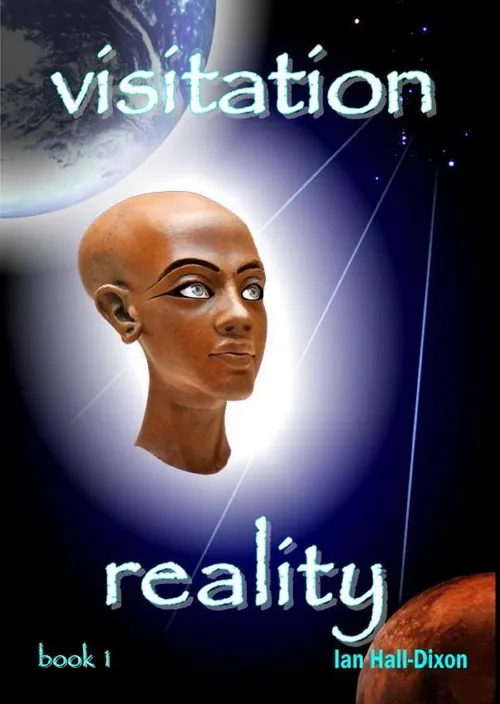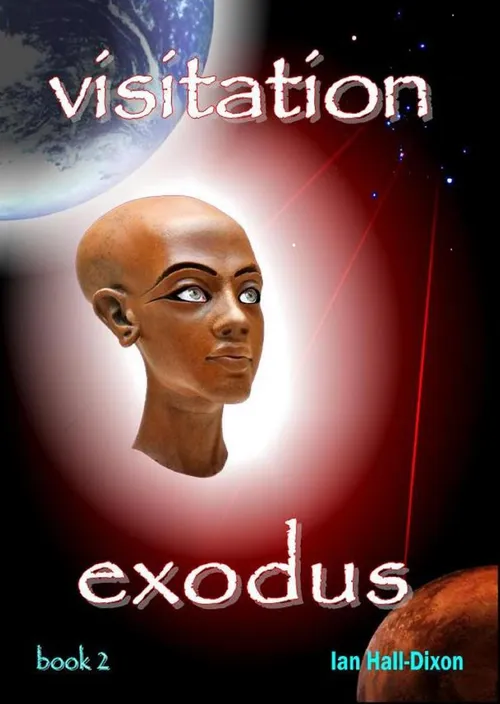TOKEN MYTHS
AN INTENDED AIM OF THE DNA changes implemented within the originally selected humans was to provide an improvement in their degree of inherent inquisitiveness and reasoning through physical brain modifications.
This process was designed to lead, eventually and over many successive generations, to a state of learning and the acquisition of skills at an accelerating rate, such that a degree of civilisation would be achieved in a much shorter time than if they had been left to the slow progression of the natural selection process.
Ultimately, it had been hoped, the modified humans might approach the same level of development as their ‘creators’.
The Settlers own and ancient DNA, from where selected sections for grafting had come and which were not too dissimilar to that of the humans, had been inserted successfully. It seemed that the intended effects were very quickly being materialised.
As a result, the new humans developed an urge to communicate with one another in more advanced ways, making records (communications over time and distance) of at first, simple but important matters, e.g. accounting the amount of food they harvested, who owned which property and the size of the land they worked.
Of great importance, immediately recognised by those of the ruling classes, was the effect of recording the land they ruled over, what those subservient to them were required to produce, the taxation revenues and the amount of wealth they were now accumulating.
Also recorded were the populations' imaginative thoughts and great mythical stories.
Their perception of what was before them, however, did not extend to things outside of their normal experience. They did the best they could of describing strange happenings and objects, e.g. the Settlers transit craft that flew effortlessly through the air sometimes in full view, and recorded these as something which had bird’s wings.
Only birds could fly, so those ‘Gods’ who could also do this (via their machines) must have wings; how else could another human being, reading the written inscriptions, understand the concept of flying.
This communication did not end with the production of marks that described sounds or whole words but also extended into graphic art. Humans had been producing graphic scenes for millennia from the natural world about them, usually in secret places (to be viewed by the initiates only) and often in fine detail.
Where they drew, on their clay tablets or on rock faces or caves, if e.g. a “flying man” had to be depicted, he was given wings; how else could anything fly through the air except with the wings of a bird. The memories of the Visitors and the Settlers, being liberally mixed up in a confusing manner, were transformed, in their drawings, into super-beings with large feathered wings attached to their backs.
Whoever was recorded like this was either one of the Visitors or one of the Settlers, but without distinction, and normal people were simply drawn with a normal presentation.
The aerial warfare that had taken place near the great mountains had been viewed by many local people. Flying machines and transit craft bristling with deadly weapons became flying chariots throwing thunderbolts. The humans of the time simply could not describe a high energy beam; what was energy, what was a beam, but it did look and sound like the natural phenomena of lightning.
Humankind had no concept of what had taken place between the Visitors and the Settlers and great stories were invented of conflicts between different Gods with one overwhelming another, often with fabricated names; this made the story more interesting.
This is something that could not be stopped and it was decided by the Settlers that it should not be. Imaginative stories can be told and retold down the generations as, in their most basic form, they are a verbal history of real events.
Where writing took hold, even better, a fantastic tale describing events that took place and the existence of the Visitors and/or the Settlers could be recorded with more detail. A point in human development would be reached where, with the appropriate level of intelligence at some future period in time, the truth may be unravelled from the fiction.
This might equally be the very catalyst that would set humankind on the search for the Halls of Records where the real history and some of the technology would be found; it was all a simple matter of time.
The Settlers, now no more than several thousands from all those who first came to the planet, were satisfied to let humankind have their myths and go their own way on their voyage of discovery. They would continue to offer what help they could but only in times of extreme need.
In fact, these myths, being deliberately reinforced occasionally by the appearance of a Settler (in the guise of a ‘God’) only served to reinforce a particular storyline. It mattered not that there was no complete truth in what is seen and recorded, just that some sort of record was being made and remembered.
Future generations were being depended upon to be able to place the myths in context, particularly if technology was to be included, and come to rational conclusions that may herald in a new dawn of understanding.
Recognising a technological process from a simplified description is often the starting point for many engineering solutions, a sort of back-engineering but without anything real in the hand. If the same can be done with descriptions of events, understanding the context in which such were conceived and written, a history can emerge from what may seem a nonsensical myth full of fantastic characters.
The Gods, who lived in the skies, were perceived as having fantastic adventures, and why not. Whoever had encountered a God and lived, remembered and perhaps wrote of his deeds. If this lead to a multiplicity of Gods, then this was something to be sorted out much later, perhaps many, many generations later.
The Settlers were very aware of the fanciful tales being told, recording and taking pleasure from finding new ones to record and pass round all of their teams, now scattered about the world.









This story has not been rated yet. Login to review this story.